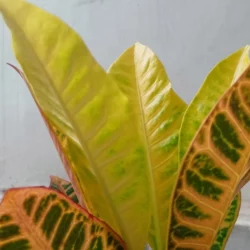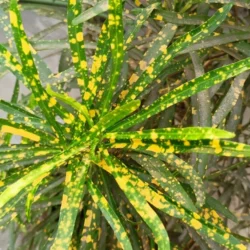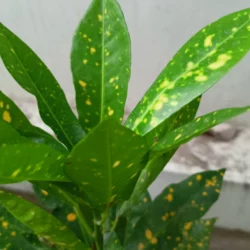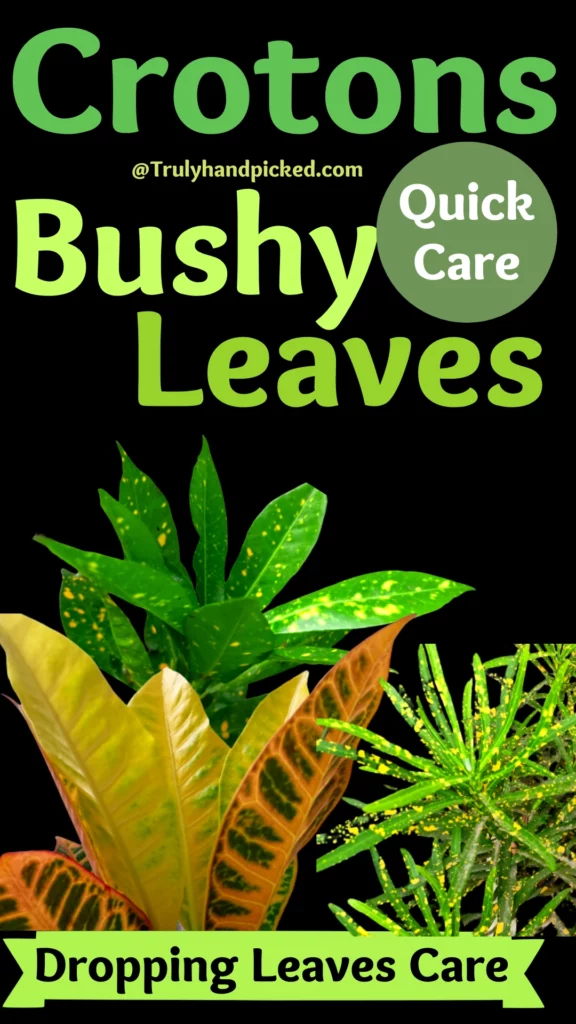Croton is an ornamental flowering houseplant in the spurge family from the Crotoneae tribe. This wide-ranging plant thrives best in an outdoor open garden area.
Yet you can grow it easily indoors in a restricted planter by following some basic growing tips. There are plenty of varieties you can find in this single genus.
However, croton Petra and croton gold dust are the noted ones among the rest species. Here are some integral facts about a croton plant we refer to in this article below to make your croton-planting experience smoother than you could ever imagine-
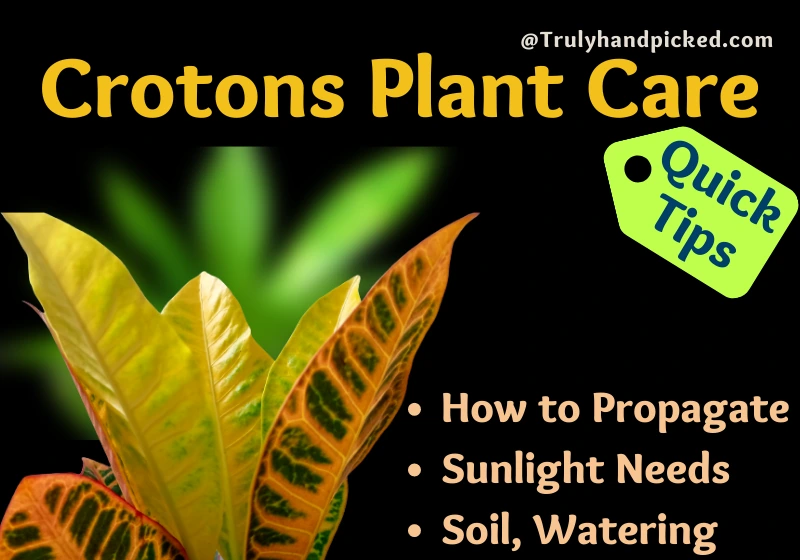
How to Care for Croton Plants:
- Soil: Use rich, sandy soil with well-drained quality and acidic pH levels. You can prepare the potting mix by combining compost, manure, and river sand in equal amounts for the best result.
- Water: A croton species couldn’t stand overwatering. So, water your plant only when the top 1-2 inches of the soil turns completely dry. During the winter and autumn seasons, you should wait, until the top 3 inches of the soil soak before watering.
- Fertilizer: Croton plants are low-medium feeders. Hence, try to feed your plant only once a month, even during the growing seasons. Apply slow-release granulated fertilizer in liquid form for a better outcome of your fertilization.
- Sun Exposer: Most of the croton species prefers full sun exposure. However, some genera can tolerate sun with partial shade and thus easily cultivatable indoors. Try to provide your growing plant with 5-6 hours of bright light every day.
- Climate: Croton plants want a warm climate with a highly humid environment to thrive well. Keep your plant at a temperature between 60° to 80° F for the entire growing period.
- Pruning: As croton is a bushy shrub, you must trim or prune it every few while to give the new shoots enough room to grow. Pruning also helps us to keep the plan in shape and remove unwanted parts away from the plant. Try to prune your plant once every 2-3 months.
- Repotting: Being an extensive plant, croton plants always overgrow their planter within 1-2 years. It also has an intricate root system. So, you must report it when the plant gives signs of overgrowing to provide the plant enough space to thrive.
- Pests and Bugs: Due to being a variegated foliage plant, croton plants always get attached to some harmful pests and bugs. Red spider mites, scales, aphids, tripes, mealybugs, etc. are typical troubleshoots you may face with a growing croton plant in the house. Always go for organic remedies in such matters.
Few Croton Varieties from My Garden
- Gold Dust
- Croton petra
- Wide Leaf Gold Dust Crotons
How to Make Croton Bushier:
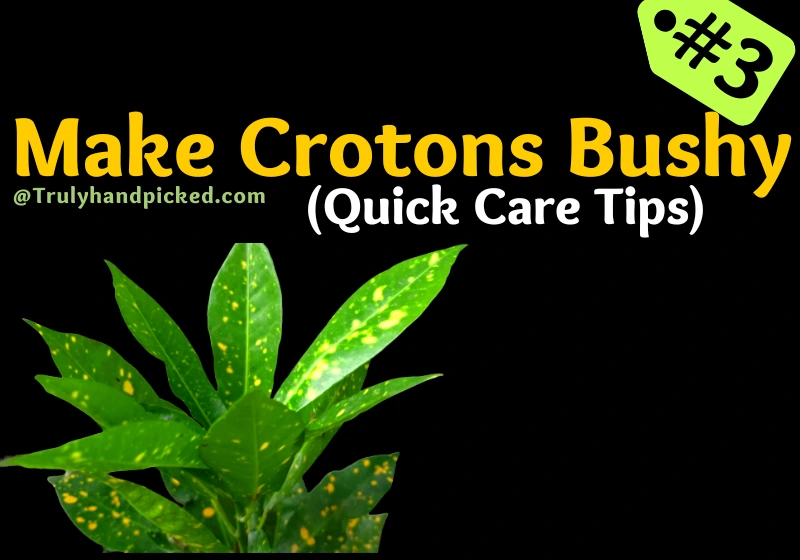
If you find that your croton plant is not bushier enough, you can boost the quality of your plant with some smart tricks. Such as-
- Pinch off the growing tips on the leaves. This process will encourage your plant to produce 2-3 new leaves with each pinch
- When the newly grown leaves are 3-4 inches long, pinch again to promote more leaves
- You can repeat this process of pinching again and again with each new development
- Pruning the leggy sections is also essential to make your plant bushier naturally
- Also, provide your plant adequate care by providing the fundamental growing needs according. You should remember that proper care can make your plant denser and bushier.
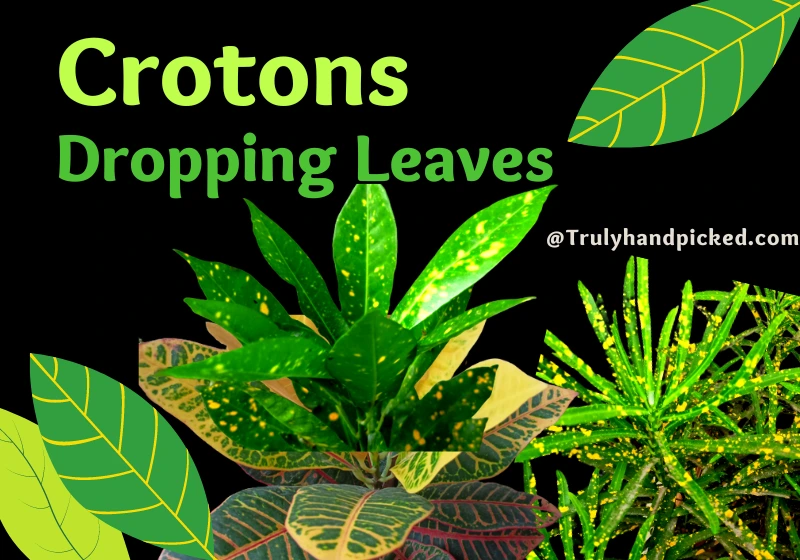
Why Is My Croton Plant Dropping Leaves?
Some unsorted issues always work behind the undefined dropping leaves issue in your growing croton plant. However, sometimes, old leaves drop due to the aging process of the plant. You don’t need to worry about that. If your plant starts dropping leaves unnecessarily without reaching the proper time, you must pay attention and solve the issue attentively. Here are some possible causes and quick tips we suggest in this regard-
Causes:
- When you keep the planting soil moist inconsistently
- If you keep the plant under unsuitable humidity
- When your plant couldn’t get enough sunlight
- If you place the planter under improper temperature
- When you overwater your plant repeatedly
- And if you keep your plant untreated from the attacks of pests or bugs for long
Solutions:
- Make sure about the proper and perfect watering methods of your growing croton plant
- Overwatering can damage the roots or make them rot, while underwatering leads leaf-drop instantly
- Croton plants are tropical and thus need high humidity. Keeping your plant in low humidity or dry air for long can drive your plant toward a leaf-drop issue
- Most of the croton species thrive under direct and full sun. they can tolerate partial or shady sun but for a certain period
- So, stop keeping your plant in cool or low-light areas for long
- Be certain that the temperature should not go below 55° F, ever where you place the planter
- And try to apply any available remedy, once you detect any kind of pest or bug infestation on your plant before they get harmful to your plants. You can go with neem oil, vinegar, soapy water, or rubbing alcohol here for quick and harmless effects.
How to Propagate Croton:
Croton is a bushy shrub with luxuriant foliage. Though, you can trim and regrow a croton plant from its stem cutting easily. You can propagate croton in both soil and water medium, depending on your choice. Here we emerge with the best possible ways of regrowing a croton plant from its cutting-
Propagating Croton From Cutting in Soil:
- Cut a 3-4 inches long newly sprouted fresh stem out of the parent plant
- Make sure the cutting contains 3-5 fresh leaves on it
- Now, you should dip the end of the cutting in rooting hormone first
- Then, bring a planter with preferred potting soil that is suitable for croton species
- Now, you need to dip a hole in the middle of the soil to plant the cutting
- Sow the cutting through that hole and secure the base with more potting soil tightly
- Water the soil with a sprayer to make it evenly moist
- Finally, keep the planter in a warm and highly humid spot for several days
- New shoots will come out within a month or two. Then, you need to replant it in a wider planter and let it thrive naturally.
Propagating Croton in Water:
- To regrow your croton cutting in water, you need to trim a stem about 6-12 inches long
- Try to cut this cutting from the top of your parent croton plant
- Make sure the stem should be thick as a pencil
- Remove 2-3 leaves from the bottom and place them in a glass of water
- Always use distilled or filtered water to do your regrowing process in water
- Cover the glass with a plastic cover to provide your cuttings a greenhouse atmosphere
- Place the planter in a warm but shady spot with 65°-75° F temperature
- New roots with initiate within 5-6 weeks
- Let the roots develop a bit more and then replant them in a planter with a preferred potting mix.
Are Croton Petra Plants Poisonous?
Croton Petra plants are poisonous to mammals, and humans. It can provide a poisonous effect even with a single touch of leaves or sap. But the venomous effect could be fatal in animals, only when someone ingests any part of this plant.
Why Is It Poisonous?
The foliage of the garden croton plant contains a poisonous property named coleus. The stem and sap of the plat also have some toxic elements named deoxyingenol. These dangerous properties could cause severe irritation to a mammal or human being noticeable.
Common Reactions:
- Drooling
- Vomiting
- Skin irritation
- Dehydration
- Diarrhea
- Respiratory problems
- And gastrointestinal irritation
How to Deal With This?
If you have any reactions from touching any parts of a croton Petra, try to wash the part with disinfected soaps or liquid immediately.
In the case of ingestion, try to bring the pet or the person to the nearest veterinarian hospital to give serious medical treatment as soon as probable.
